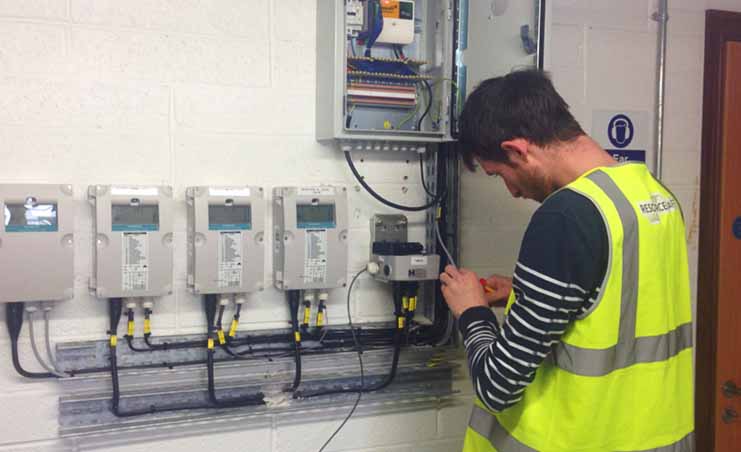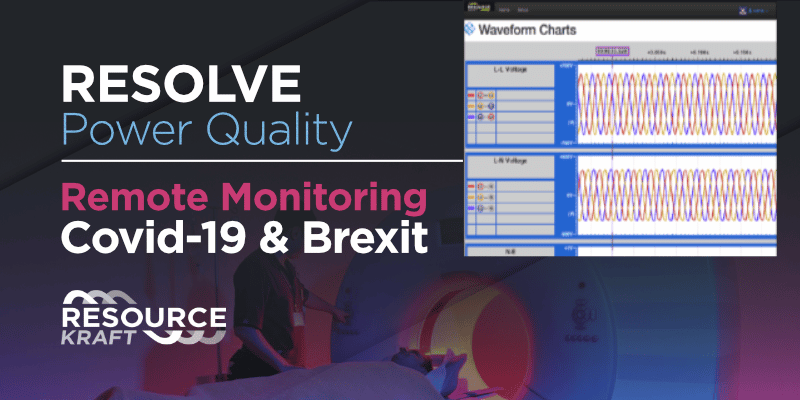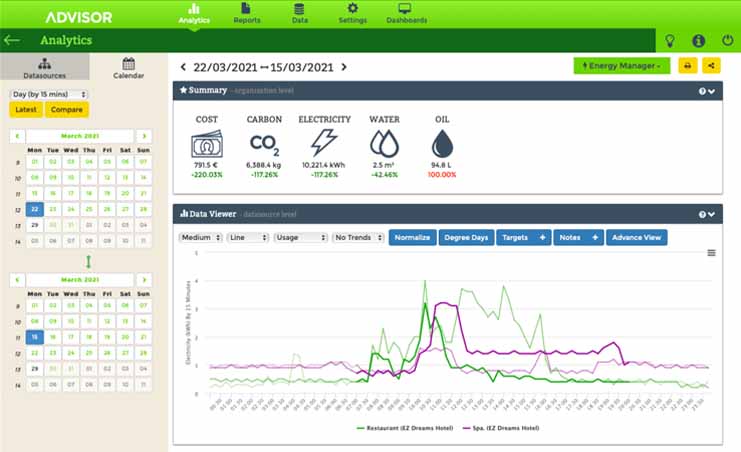Before you can start seriously addressing your business energy costs, you need to understand how to read your energy bills. Now, the Irish energy utilities issue bills that are often (ahem!) less than tractable. This is a simple tutorial to help you read and understand them.
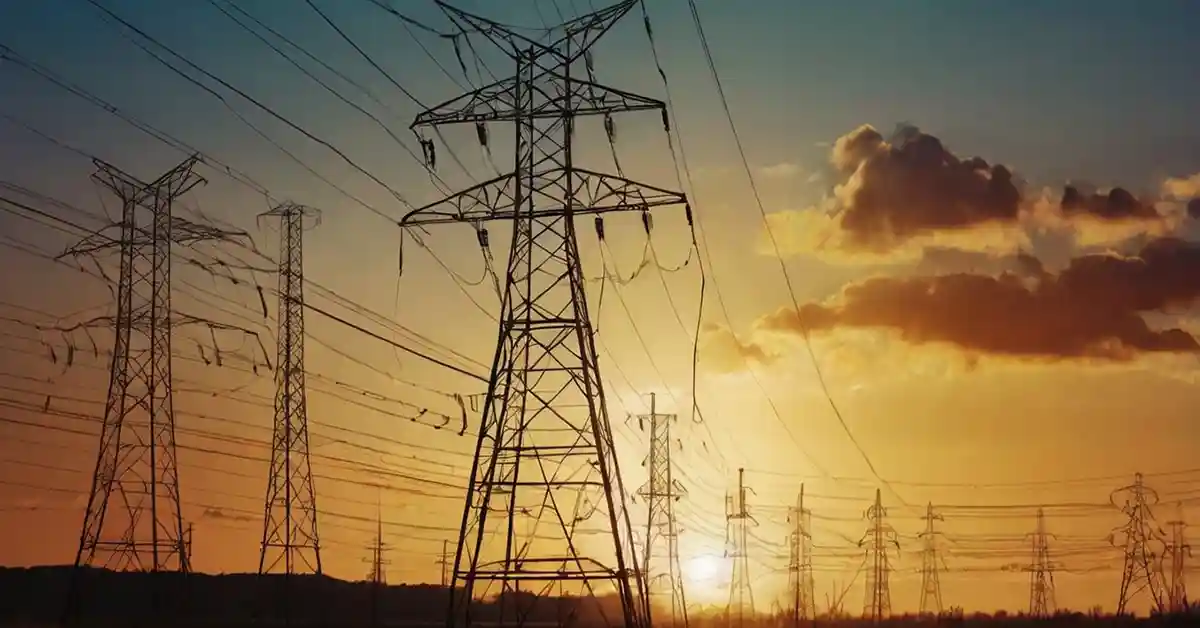
Getting to Grips with the Detail
The first step, when comparing any bill, is to check the billing period as the number of billing days in each month vary, having an effect on your bottom line. The next thing to check is that the tariff (e.g. Low Voltage Max Demand) has not changed without your approval. You should also be aware that some tariff types are seasonal (e.g. Summer/Winter) so you might see an increase in the cost of an October bill V's September as we move into the winter period. This will usually be reflected by a change in the unit rates.
You should continue through your bill comparing each line item with the previous months. The consumption can, of course vary, depending on the operations at your site but you should be aware of these changes and understand how they impact consumption and cost. For example, you may have run extra shifts this month to meet customer demand. Look for any one line item that appears to have increased considerably and question why this might be the case. Also, look out for any surcharge items, e.g. Low Power Factor Surcharge. This indicates that you have been charged for abnormal usage, that may have been prevented, at your site.
There are three main ways to reduce the cost of your electrical energy bill:
1. Reduce your energy consumption.
2. Change/Negotiate a more favourable tariff with your utility supplier.
3. Ensure your Maximum Import Capacity (MIC) is correct and you are not paying for additional capacity you do not use. You should seek professional advice when making any changes to your MIC.
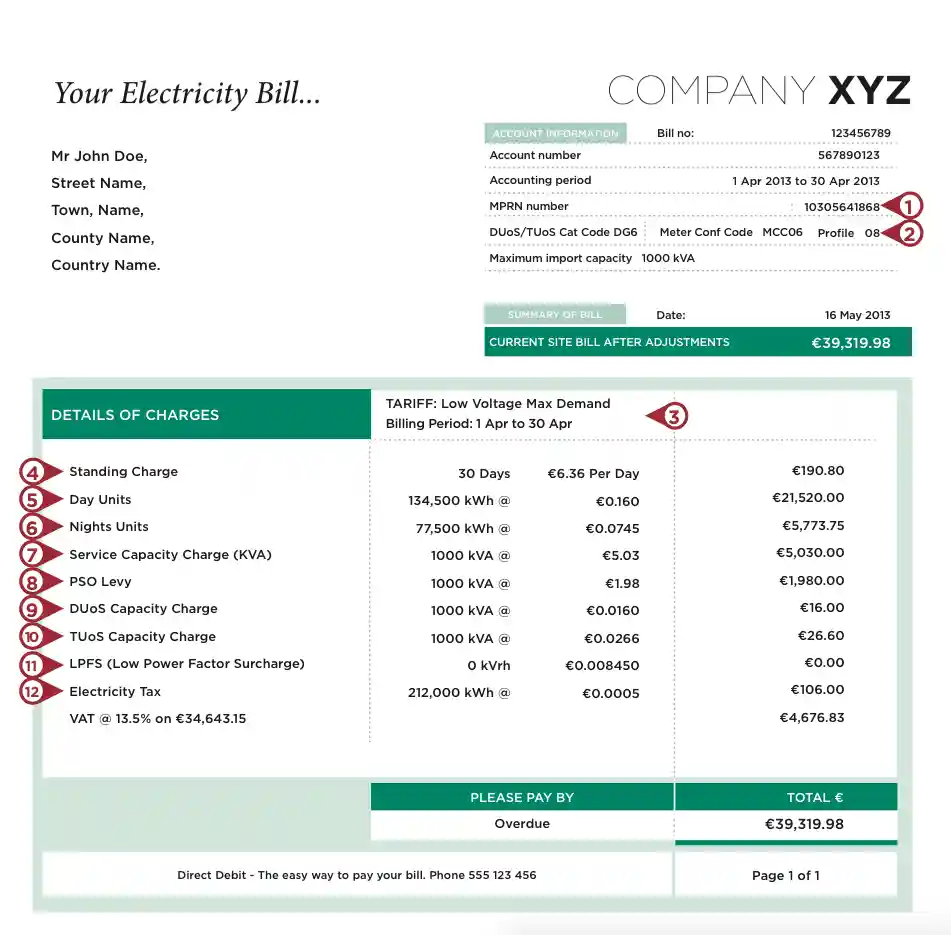
1. MPRN:
Metering Point Reference Number, this is a unique number used to identify your meter network connection.
2. DG MC Profile:
Used to identify user configuration and usage profile. The band which your organisation fits into can dictate the rates at which you will buy your electricity.
3. Billing Period:
The period within which your electricity consumption is billed.
4. Standing Charge:
The standing charge that appears on your bills for both gas and electricity goes toward the maintenance of the country's gas and electricity infrastructure i.e. gas pipes and electricity pylons. This charge is a fixed daily rate and is site dependent.
5. Day Rate:
This charge is applied between the hours of 08.00 to 23.00. This rate is agreed during negotiations with your utility provider.
6. Night Rate:
This charge is applied between the hours of 23.00 – 08.00. This rate is ALSO agreed upon during negotiations with your utility provider.
7. Service Capacity Charge:
Maximum Import Capacity (MIC) is the level of electrical capacity contracted between your business and ESB Networks. The service capacity charge on your bill is based on your contracted MIC level. The unit of measurement for MIC is the kilovolt ampere (kVA)
8. PSO Levy:
Public Service Obligation Levy, is a government subsidy that is charged to all electricity customers in Ireland. The money collected from the PSO Levy is used to subsidise renewable energy generation and peat burning power plants.
9. DUoS Charge:
A DUoS charge is a fee that ESB Networks charges your Electricity Supplier for use of the Electricity Distribution System. This is a toll for the use of the ESB Networks Distribution network.
10. TUoS Charge:
The Transmission Use of System charges are the charges associated with provision of access to and use of the transmission grid. The revenue collected from TUoS is used to cover the cost of operation, planning and development of the transmission network.
11. LPFS:
The Low Power Factor Surcharge applies when the metered wattless power is more than one third of the metered kWh (in any two monthly billing period). The charge is applicable to the kVARh in excess of one third of the kWh.
12. Electricity Tax:
This is a charge applied by government on each unit of electricity consumed.
We will shortly do a follow-on post for gas bills.



